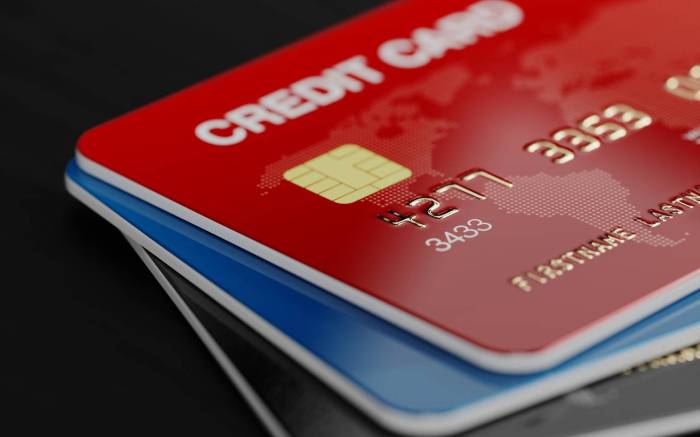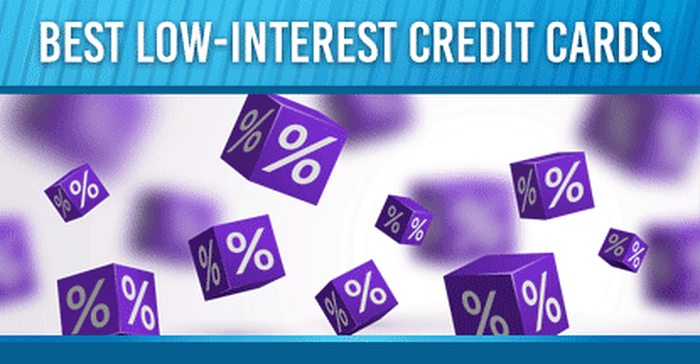
Navigating the world of personal finance can be challenging, and understanding credit cards is a crucial step towards financial well-being. Low-interest credit cards offer a potentially valuable tool for managing debt and building credit responsibly, but understanding their nuances is key to maximizing their benefits and avoiding pitfalls. This guide delves into the intricacies of low-interest credit cards, exploring eligibility, fees, responsible usage, and potential alternatives.
From defining what constitutes a “low-interest” rate and outlining the application process to providing strategies for effective debt management and highlighting the impact on your credit score, we aim to equip you with the knowledge needed to make informed decisions. We’ll also explore the differences between low-interest and 0% APR cards, and examine various fee structures across different providers. This comprehensive overview will empower you to confidently navigate the landscape of low-interest credit cards.
Defining “Low Interest Credit Cards”

Low-interest credit cards are a valuable financial tool for individuals seeking to manage debt effectively or make large purchases without incurring exorbitant interest charges. They offer significantly lower interest rates compared to standard credit cards, making them a more affordable option for carrying a balance. Understanding the nuances of these cards is crucial for making informed financial decisions.Low-interest credit cards typically feature annual percentage rates (APRs) that are considerably lower than the average credit card APR.
While the specific range varies depending on creditworthiness and the card issuer, a low-interest credit card generally falls within the range of 10% to 25% APR. This contrasts sharply with standard credit cards, which often boast APRs exceeding 25%, and sometimes reaching upwards of 30%. It’s important to remember that even these “low” rates represent a significant cost of borrowing, so responsible spending and repayment strategies are essential.
Low-Interest versus 0% APR Credit Cards
The key difference between low-interest and 0% APR credit cards lies in the interest rate charged. 0% APR cards offer an introductory period—typically 6 to 18 months—during which no interest is charged on purchases. After this introductory period, however, a standard APR, which can be high, kicks in. Low-interest credit cards, on the other hand, consistently maintain a lower APR throughout the card’s lifespan.
Therefore, while a 0% APR card can be beneficial for paying off a balance quickly within the promotional period, a low-interest card offers long-term cost savings for individuals who anticipate carrying a balance for an extended duration. For example, a consumer consolidating high-interest debt onto a 0% APR card must pay off the balance before the promotional period ends to avoid accruing substantial interest.
A low-interest card provides a more predictable and potentially less expensive option for managing ongoing debt.
Common Features and Benefits of Low-Interest Credit Cards
Low-interest credit cards often come with several features designed to assist users in managing their finances. These features, while not universally present across all low-interest cards, can significantly impact the overall value proposition.A common benefit is the lower monthly interest payments compared to standard cards. This directly translates to more money available for other financial obligations or savings. Many low-interest cards also offer features such as balance transfer options, enabling consumers to consolidate high-interest debts onto a single card with a lower APR.
This consolidation simplifies debt management and potentially reduces overall interest payments. Another attractive feature is the potential for rewards programs, though these are less frequent on low-interest cards compared to standard cards with higher APRs. Some cards might offer cashback rewards or points programs, but the rewards rates may be lower to offset the lower interest rates.
Finally, responsible use of a low-interest credit card can improve one’s credit score over time, provided payments are made on time and consistently. Building a positive credit history is crucial for securing better financial opportunities in the future.
Illustrative Examples of Low-Interest Credit Card Offers

Understanding the nuances of low-interest credit cards requires examining specific examples. Different cards offer varying APRs, fees, and reward structures, significantly impacting the overall value proposition. The following examples illustrate the range of options available and the importance of careful consideration before applying.
Low-Interest Card with Annual Fee: The “SecureBalance” Card
The SecureBalance card boasts a low introductory APR of 0% for the first 12 months, then jumps to a fixed APR of 12.99%. However, it comes with a hefty annual fee of $75. This card is targeted at individuals aiming to consolidate high-interest debt and pay it down aggressively within the introductory period. The benefit lies in the significant interest savings during the 0% period, enabling faster debt reduction.
The drawback is the annual fee, which offsets some of the interest savings if the debt isn’t paid off within the 12-month grace period. The card offers no rewards program, focusing solely on its low-interest proposition.
Low-Interest Card with Rewards: The “SmartSpend” Card
The SmartSpend card offers a slightly higher fixed APR of 10.99% but includes a rewards program: 1% cashback on all purchases. This card appeals to individuals who need a low-interest option but also value earning rewards. The advantage is the combination of manageable interest rates and a tangible reward for spending. The drawback is that the rewards might not fully offset the interest paid, especially for individuals with large balances or slow repayment plans.
Case Study 1: Responsible Use of a Low-Interest Credit Card
Sarah, burdened with high-interest credit card debt, secured a low-interest balance transfer card offering a 0% APR for 18 months. She diligently transferred her balance, meticulously tracked her spending, and created a budget to ensure complete debt repayment within the introductory period. By consistently making more than the minimum payment, she successfully eliminated her debt before the interest rate increased, saving considerable money on interest charges.
This demonstrates the potential for financial improvement through responsible low-interest credit card use.
Case Study 2: Irresponsible Use of a Low-Interest Credit Card
Mark obtained a low-interest credit card with a 0% introductory period, intending to pay it off gradually. However, he continued to make large purchases, relying on the low introductory rate to avoid immediate interest charges. Once the introductory period ended, the APR significantly increased, and Mark found himself unable to manage the accumulating interest and debt. He ultimately fell into a cycle of minimum payments, paying significantly more in interest than he would have had he adopted a more disciplined approach.
This illustrates the potential pitfalls of irresponsible low-interest credit card use.
Ultimately, responsible credit card usage is paramount. Understanding the terms and conditions of your low-interest credit card, budgeting effectively, and consistently making on-time payments are vital for building a positive credit history and avoiding accumulating unnecessary debt. By carefully considering the information presented in this guide, you can make informed choices that align with your financial goals and pave the way for a more secure financial future.
Remember to always compare offers and choose the card that best suits your individual needs and circumstances.
Commonly Asked Questions
What is the difference between a low-interest and a 0% APR credit card?
A 0% APR card offers an introductory period with no interest charges, typically for a limited time. A low-interest card consistently has a lower interest rate than standard credit cards, but it’s not necessarily 0%.
How can I find the best low-interest credit card for me?
Compare offers from multiple lenders, considering factors like APR, fees, rewards programs, and your credit score. Use online comparison tools and read reviews.
What happens if I miss a credit card payment?
Missing payments can significantly damage your credit score and result in late payment fees. It can also lead to higher interest rates in the future.
Can I transfer balances from high-interest cards to a low-interest card?
Yes, many low-interest cards allow balance transfers, often with a promotional introductory period. However, be aware of potential balance transfer fees.





